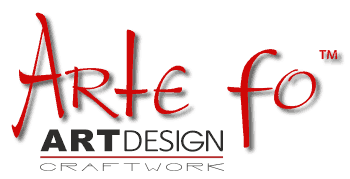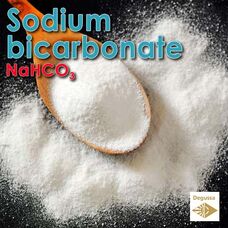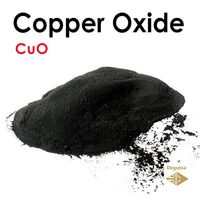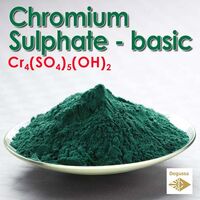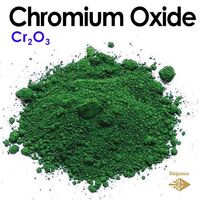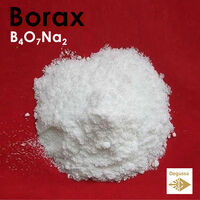Sodium Bicarbonate - NaHCO3
NaHCO3
Sodium bicarbonate, also known as baking soda, is a white crystalline powder with a slightly salty taste. It is composed of sodium ions (Na+) and bicarbonate ions (HCO3-). Sodium bicarbonate has a wide range of applications due to its various properties.
Here are some common uses of sodium bicarbonate:
Baking: Sodium bicarbonate is widely used as a leavening agent in baking. When combined with an acidic ingredient, such as vinegar or buttermilk, it produces carbon dioxide gas, which helps dough or batter rise and creates a lighter texture in baked goods.
Antacid: Sodium bicarbonate can act as an antacid to relieve heartburn, acid indigestion, and upset stomach. When ingested, it reacts with excess stomach acid, neutralizing it and providing temporary relief from symptoms.
Cleaning and deodorizing: Baking soda is an effective and versatile household cleaner. It can be used to scrub surfaces, remove stains, and deodorize odors in refrigerators, carpets, laundry, and more. Its mild abrasive nature helps with gentle scrubbing without causing damage.
Personal care: Sodium bicarbonate is found in various personal care products, such as toothpaste, mouthwash, and deodorants. It can help neutralize odors and provide a gentle cleansing effect.
Medical uses: Sodium bicarbonate is sometimes used in medical settings to treat certain conditions. For example, it may be administered intravenously to correct acidosis (excess acidity in the blood) or to manage certain types of poisoning.
It's important to note that while sodium bicarbonate has many practical uses, it should be used appropriately and in moderation. Excessive ingestion or misuse can lead to adverse effects. As always, it's advisable to consult appropriate sources, such as medical professionals or product instructions, for specific guidance on its usage.
In ceramics and pottery, sodium bicarbonate can be used for various purposes. Here are some common uses of sodium bicarbonate in this context:
Glaze effects: Sodium bicarbonate can be added to glazes to create interesting surface effects. When heated during firing, sodium bicarbonate decomposes and releases carbon dioxide gas, causing bubbles or a frothy texture to form in the glaze. This can create unique patterns or textures on the ceramic surface.
Kiln wash: Kiln wash is a protective coating applied to kiln shelves to prevent glazes or ceramic pieces from sticking to them during firing. Sodium bicarbonate is sometimes used as an ingredient in kiln wash formulations. It helps to reduce the chances of glazes adhering to the kiln shelf, making it easier to remove fired ceramics without damage.
Removing wax resist: In pottery, wax resist is often used to create decorative patterns or to prevent certain areas from receiving glaze. After applying wax resist, sodium bicarbonate can be used as a cleaning agent to remove the wax once the pottery is dried. It helps dissolve the wax and facilitate its removal, revealing the desired pattern.
Cleaning tools and equipment: Sodium bicarbonate can be used as a mild abrasive cleaner for cleaning pottery tools, equipment, and kiln surfaces. It can help remove glaze drips, stains, and other residues without scratching or damaging the surfaces.
Clay pH adjustment: In some cases, sodium bicarbonate may be used to adjust the pH of clay. Clay with an improper pH can cause issues during forming or firing processes. Sodium bicarbonate can be added to clay to raise its pH and correct any imbalances.
It's worth noting that the specific usage and proportions of sodium bicarbonate may vary depending on the desired effect, the type of clay and glazes being used, and individual preferences. It's always recommended to consult pottery resources, experienced potters, or ceramic experts for guidance on the appropriate use of sodium bicarbonate in ceramics and pottery.
More about Sodium Bicarbonate in Wikipedia
Formula: NaHCO3
Molar mass: 84.0066 g/mol
Form: Monoclinic white crystal powder
CAS Number: 144-55-8
EC Number: 205-633-8
IUPAC Name: sodium hydrogen carbonate
Density: 2.20 g/cm³
Synonyms: baking soda, bread soda, cooking soda, and bicarbonate of soda, E500, Sodium hydrocarbonate, Meylon, Acidosan, Neut, Natriumhydrogenkarbonat
Sodium Bicarbonate - NaHCO3
- Brand: Degussa
- Product Code: Oxide - Sodium Bicarbonate - NaHCO3
- SKU: NaHCO3
- Availability: 568
-
0.19€
Available Options
Related Products
COPPER OXIDE - Black Copper(II) Oxide for production of enamels, coatings, and glazes
CuO Copper Oxide is used in the production of enamels, coatings, and glazes, too. Black copper oxide (Cu..
0.59€
Basic Chromium Sulphate - CHROMIUM (III) SULPHATE Basic Extra Pure
Cr2(SO4)5(OH)2 Basic Chromium Sulfate is mainly used in tanning of processing leather industry or synthesis of othe..
1.19€
Chromium(III) oxide Chromia Demystifying for Fantastic Glaze
Cr2O3 Chromium(III) oxide, also known as chromic oxide or green chromium oxide, is a chemical compound with the for..
1.19€
BORAX - Improves glaze's frit and produces brighter vivid colors
B4O7Na2 Borax, also known as sodium borate, sodium tetraborate, or disodium tetraborate, is a naturally occurring m..
0.99€
Tags: oxides
